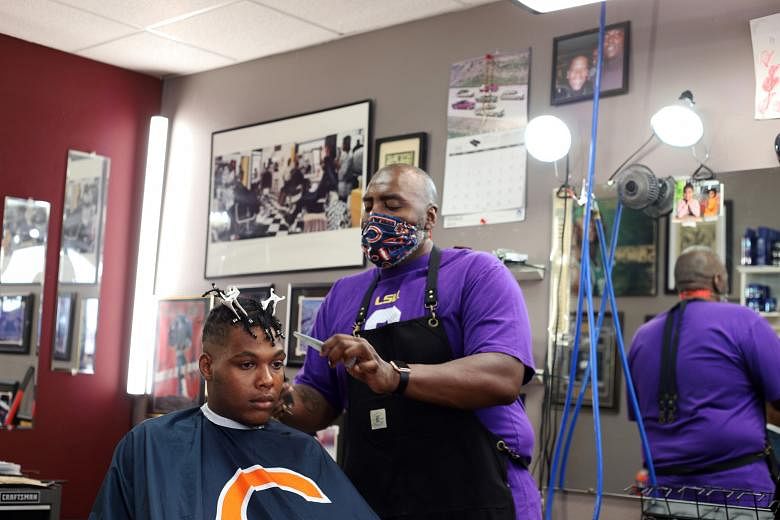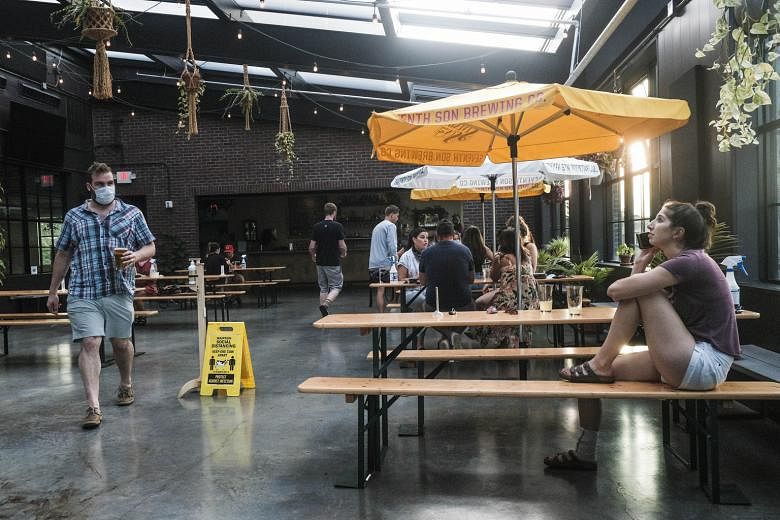CHICAGO • First, the Pacific North-west and the north-east were hit hardest as the coronavirus tore through the nation.
Then, it surged across the south.
Now, the virus is again picking up dangerous speed in much of the Midwest - and in states from Mississippi to Florida to California that thought they had already seen the worst of it.
As the United States rides what amounts to a second wave of cases, with daily new infections levelling off at an alarming higher mark, there is a deepening national sense that the progress made in fighting the pandemic is coming undone and that no patch of America is safe.
In Missouri, Wisconsin and Illinois, distressed government officials are retightening restric-tions on residents and busi-nesses, and sounding warnings about a surge in coronavirus-related hospitalisations.
In the south and the west, several states are reporting their highest levels of new Covid-19 cases, with outbreaks overwhelming urban and rural areas alike.
Across the country, communities have seen coronavirus numbers fall and then shoot back up - not unlike the two ends of a see-saw.
In Illinois, Governor J.B. Pritzker sounded an unusually sombre note this past week as he delivered a warning that reverberated across the state: Even though Illinois residents had battled an early flood of infections and then managed to reduce the spread of the virus, their successes were fleeting.
As of last Thursday, the state was averaging more than 1,400 cases a day, up from about 800 at the start of last month.
"We are at a danger point," Mr Pritzker said.
Judge Lina Hidalgo, the top elected official in Harris County, which includes Houston, Texas, said: "There is a sort of collective tiredness and frustration, and of course I feel it too - we all feel it. So, it is difficult to know that there is no real end in sight."
In US communities that saw improvement in June, such as Milwaukee County in Wisconsin, there was a widespread feeling of relief, said Dr Ben Weston, director of medical services for the Milwaukee County Office of Emergency Management.
But then mask-wearing and social distancing began to relax.
"There was a sense of complacency, like, 'We are finally beyond this; it is finally getting better'," he said. "We were seeing our numbers go down, but the reason is because of physical distancing. It was because people were being so careful. There was no reason to think that cases weren't going to rise."
Last Thursday, Wisconsin Governor Tony Evers, a Democrat, made another attempt to get a handle on the outbreaks in his state, issuing an order that every resident wear a mask indoors and in public, beginning last Saturday.
Many states have traced new outbreaks to the loosening of the economically costly restrictions aimed at stopping the spread of the virus.
In California, which has had more than 500,000 coronavirus cases - more than any other state - the reopening has proved disastrous.
When the pandemic was ravaging the north-east in March and April, California kept its daily case count around 2,000, and the state was praised for its early and aggressive actions to combat the virus.
The state is now averaging more than four times as many cases - 8,500 a day.
Los Angeles County and other Southern California counties account for the majority of the state's infections, but the virus is now everywhere.
In Texas, after cases and hospitalisations seemed to level off and even decrease in recent days, Harris County broke a single-day record with 2,100 new cases last Friday.
Mr Alan Rosen, who leads the county's Precinct One Constable's Office, said: "I think, to a certain extent, we saw a spike because people were fatigued over it.
"They were fatigued over hearing about it every day. They were fatigued about being cooped up in their house and being away from people."
Harris County residents have been coping with the lulls and peaks of a physical, emotional, fiscal and logistical crisis from an invisible foe nearly three years after surviving Hurricane Harvey, one of the worst disasters in US history.
"It is a roller coaster," said Mr Rosen, who has recovered after getting infected with the virus in May.
"It is not like a hurricane that is coming through and we know what to do. We know we got to clean up and rebuild, and everybody is accustomed to the timeframe. But with this, there are just so many unknowns."
NYTIMES


